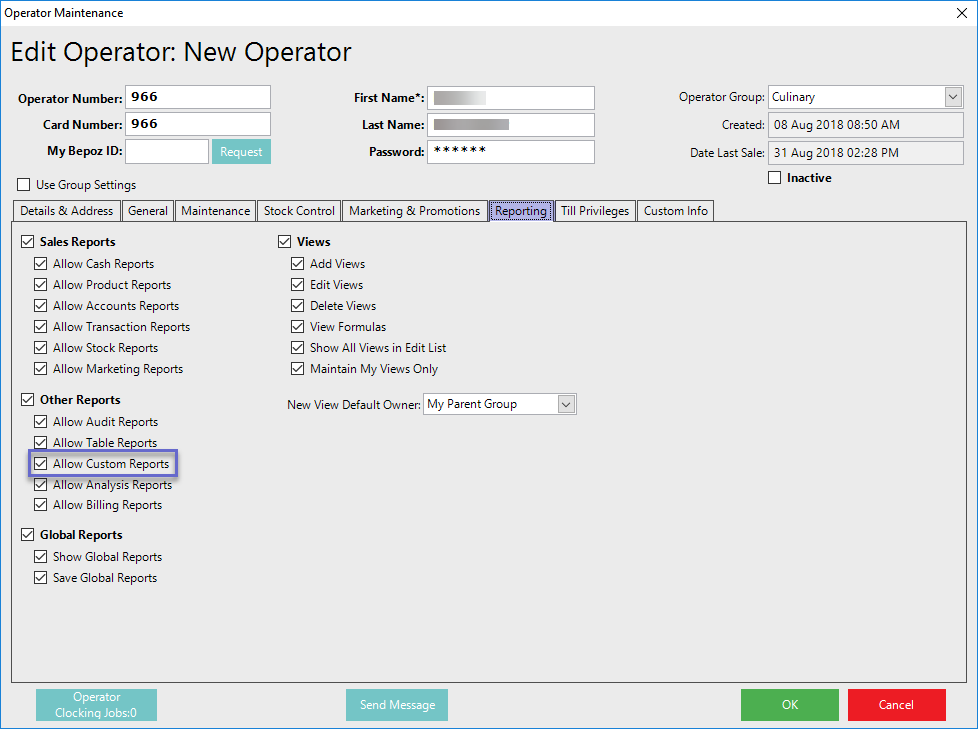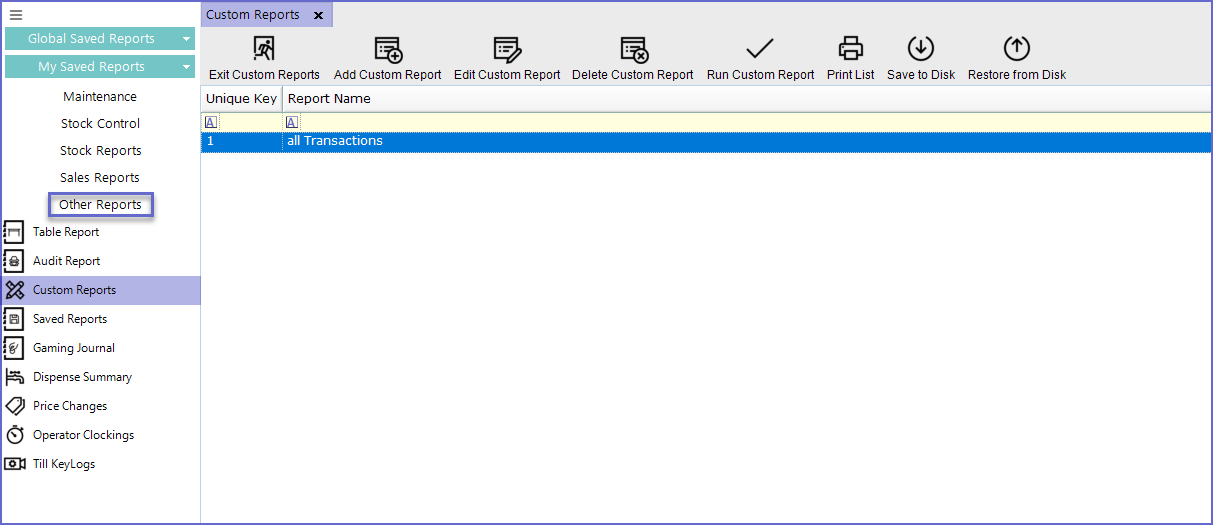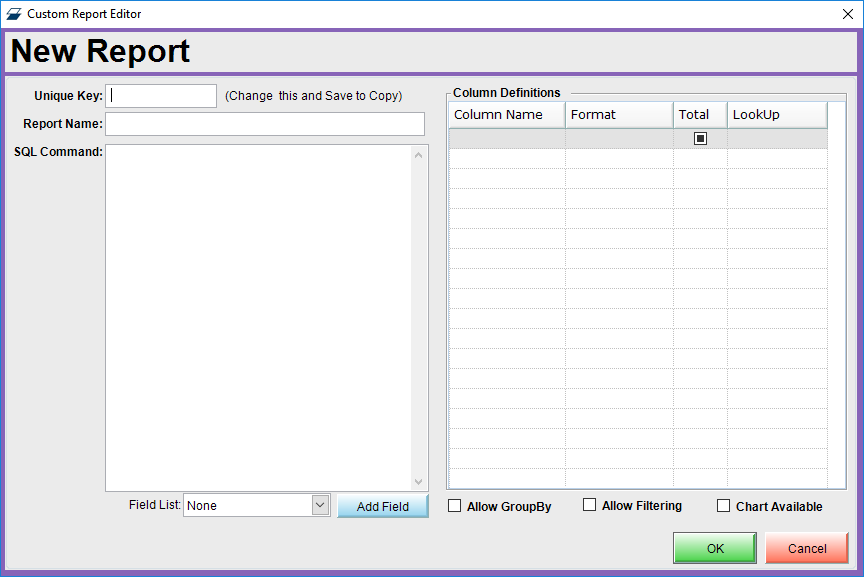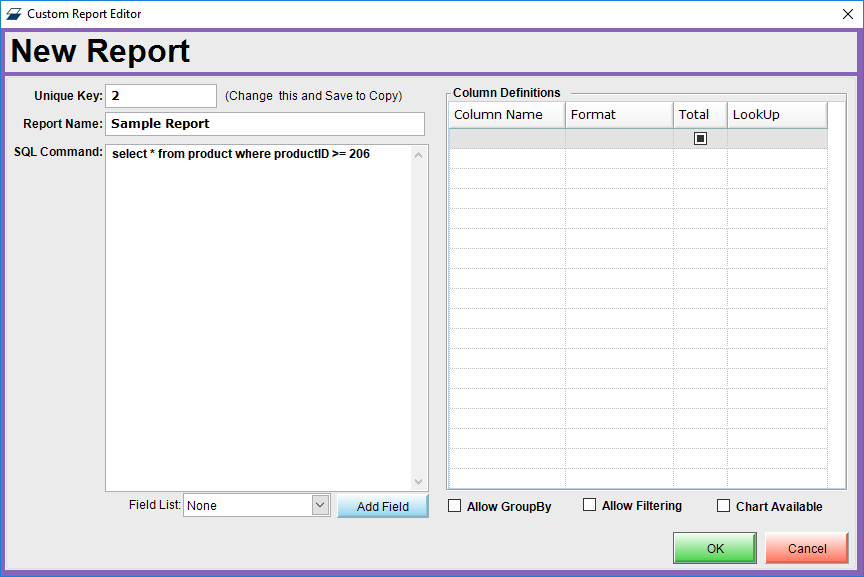-
End-User | Products & SmartPOS
-
End-User | Stock Control
-
End-User | Table Service and Kitchen Operations
-
End-User | Pricing, Marketing, Promotions & Accounts
- Prize Promotions
- Points, Points Profiles and Loyalty
- Product Promotions
- Repricing & Discounts in SmartPOS
- Vouchers
- Account Till Functions
- Pricing, Price Numbers and Price Modes
- Raffles & Draws
- Marketing Reports
- Accounts and Account Profiles
- Rewards
- SmartPOS Account Functions
- Troubleshooting
- Product Labels
- Packing Slips
-
End-User | System Setup & Admin
-
End-User | Reporting, Data Analysis & Security
-
End-User | Membership & Scheduled Billing
-
End-User | Operators, Operator Permissions & Clocking
-
Interfaces | Data Send Interfaces
-
Interfaces | EFTPOS & Payments
- NZ EFTPOS Interfaces
- Linkly (Formerly PC-EFTPOS)
- Adyen
- Tyro
- ANZ BladePay
- Stripe
- Windcave (Formerly Payment Express)
- Albert EFTPOS
- Westpac Presto (Formerly Assembly Payments)
- Unicard
- Manager Cards External Payment
- Pocket Voucher
- OneTab
- Clipp
- eConnect-eConduit
- Verifone
- AXEPT
- DPS
- Liven
- Singapore eWallet
- Mercury Payments TRANSENTRY
- Ingenico
- Quest
- Oolio - wPay
-
Interfaces | SMS & Messaging
-
Interfaces | Product, Pricing, Marketing & Promotions
- Metcash Loyalty
- Range Servant
- ILG Pricebook & Promotions
- Oolio Order Manager Integration
- Ubiquiti
- Product Level Blocking
- BidFood Integration
- LMG
- Metcash/IBA E-Commerce Marketplace
- McWilliams
- Thirsty Camel Hump Club
- LMG Loyalty (Zen Global)
- Doshii Integration
- Impact Data
- Marsello
- IBA Data Import
- Materials Control
- Last Yard
- Bepoz Standard Transaction Import
-
Interfaces | Printing & KDS
-
Interfaces | Reservation & Bookings
-
Interfaces | Database, Reporting, ERP & BI
-
Interfaces | CALink, Accounts & Gaming
- EBET Interface
- Clubs Online Interface
- Konami Interface
- WIN Gaming Interface
- Aristocrat Interface
- Bally Interface
- WorldSmart's SmartRetail Loyalty
- Flexinet & Flexinet SP Interfaces
- Aura Interface
- MiClub Interface
- Max Gaming Interface
- Utopia Gaming Interface
- Compass Interface
- IGT & IGT Casino Interface
- MGT Gaming Interface
- System Express
- Aristocrat nConnect Interface
- GCS Interface
- Maxetag Interface
- Dacom 5000E Interface
- InnTouch Interface
- Generic & Misc. CALink
-
Interfaces | Miscellaneous Interfaces/Integrations
-
Interfaces | Property & Room Management
-
Interfaces | Online Ordering & Delivery
-
Interfaces | Purchasing, Accounting & Supplier Comms
-
SmartPOS | Mobile App
-
SmartPDE | SmartPDE 32
-
SmartPDE | Denso PDE
-
SmartPDE | SmartPDE Mobile App
-
MyPlace
-
MyPlace | myPLACE Lite
-
MyPlace | Backpanel User Guides
- Bepoz Price Promotions
- What's on, Events and tickets
- Staff
- System Settings | Operational Settings
- Vouchers & Gift Certificates
- Member Onboarding
- Members and memberships
- System Settings | System Setup
- Reports and Reporting
- Actions
- Offers | Promotions
- Messaging & Notifications
- System Settings | App Config
- Surveys
- Games
- User Feedback
- Stamp Cards
-
MyPlace | Integrations
-
MyPlace | FAQ's & How-2's
-
MyPlace | Release Notes
-
YourOrder
-
YourOrders | Backpanel User Guides
-
YourOrders | YourOrder Kiosk User Guide
-
YourOrders | Merchant App User Guide
-
WebAddons
-
Installation / System Setup Guides
- SmartPOS Mobile App | Setup
- SmartPOS Mobile App | SmartAPI Host Setup
- SmartPOS Mobile App | BackOffice Setup
- SmartPOS Mobile App | Pay@Table setup
- SmartKDS Setup 4.7.2.7 +
- SmartKDS Setup 4.6.x
- SQL Installations
- Server / BackOffice Installation
- New Database Creation
- Multivenue Setup & Config.
- SmartPOS
- SmartPDE
- Player Elite Interface | Rest API
- Interface Setups
- Import
- KDSLink
- Snapshots
- Custom Interface Setups
-
HOW-2
- Product Maintenance
- Sales and Transaction Reporting
- SmartPOS General
- Printing and Printing Profiles
- SQL
- Repricing & Discounts
- Stock Control
- Membership
- Accounts and Account Profiles
- Miscellaneous
- Scheduled Jobs Setups
- Backoffice General
- Purchasing and Receiving
- Database.exe
- EFTPOS
- System Setup
- Custom Support Tools
-
Troubleshooting
-
Hardware
1 | Introduction to Custom Reports
This article covers a basic overview of the Custom Reports component and its features within BackOffice. Custom Reports are powered by SQL server which is why the report cannot be run by everyone. Operators should have a proper understanding of SQL command before they are able to set up a custom report. SQL commands are required to create a custom report.
This article covers a basic overview of the Custom Reports component and its features within BackOffice.
Custom Reports are powered by SQL server which is why the report cannot be run by everyone.
Operators should have a proper understanding of SQL command before they are able to set up a custom report.
SQL commands are required to create a custom report.
Prerequisites
- For an Operator to be able to access and run Custom Reports within BackOffice, the Allow Custom Reports flag within the Reporting tab of Operator Maintenance must first be enabled
- If this flag is not enabled, an Operator cannot access Custom Reports

Accessing Custom Reports
- Complete the following steps to access Custom Reports:
- Log in to BackOffice
- From the side menu, Select "Other Reports" to expand the list of Available Reports
- Select Custom Reports which will open a new Custom Report Window


Button |
Description |
| Exit Custom Reports |
|
| Add Custom Report |
|
| Edit Custom Report |
|
| Delete Custom Report |
|
| Run Custom Report |
|
| Print List |
|
| Save to Disk |
|
| Restore from Disk |
|
Adding Custom Report
- To Add a new Custom report; Click on the 'Add Custom Report' button which will open a new Custom Report Editor page

- Unique Key
- Allows operator to set a character as the unique key
- The unique key is a custom user-defined field
- Report Name
- Sets a Name for the report
- SQL Command
- Allows operators to enter SQL commands to display the report
- Only selected SQL statements are allowed.
- Column Definitions
- there are 4 column definitions - Column Name, Format, total and lookup
- Column Name is user-defined name for Items
- Format is a drop-down selection box that shows the item format
- Total is a flag option - when flagged on it will show the total of line selection
- Lookup is a drop-down selection box
Flags & Options
- Field List
- SQL Field list options to add in the SQL command box
- The field list provides all the available fields; however operators can only add the relevant ones in the SQL box otherwise the system will show an error message
- Add Field
- This button will add a field from the field list
- Allow GroupBy
- If this is on, the operator can drag report columns to the group by area for reporting groupings
- Allow Filtering
- If this is on, the operator can filter through the custom report
- Chart Available
- If this is on, the operator can chart reports
SQL Commands
- To add a new custom report, operators need to Add SQL commands in SQL Command box
- This will prompt the system to display the given Items
- The following example creates a new report called Sample Report
SQL command in Sample Report

- This SQL command will list all the products that have Product ID more than or equal to 206
- The column definition is not mandatory but the operator can add Column Name to change its settings

- Since the Custom Report requires adding SQL commands, it is more complex than other types of reports and requires Operators with SQL knowledge to start configuration
